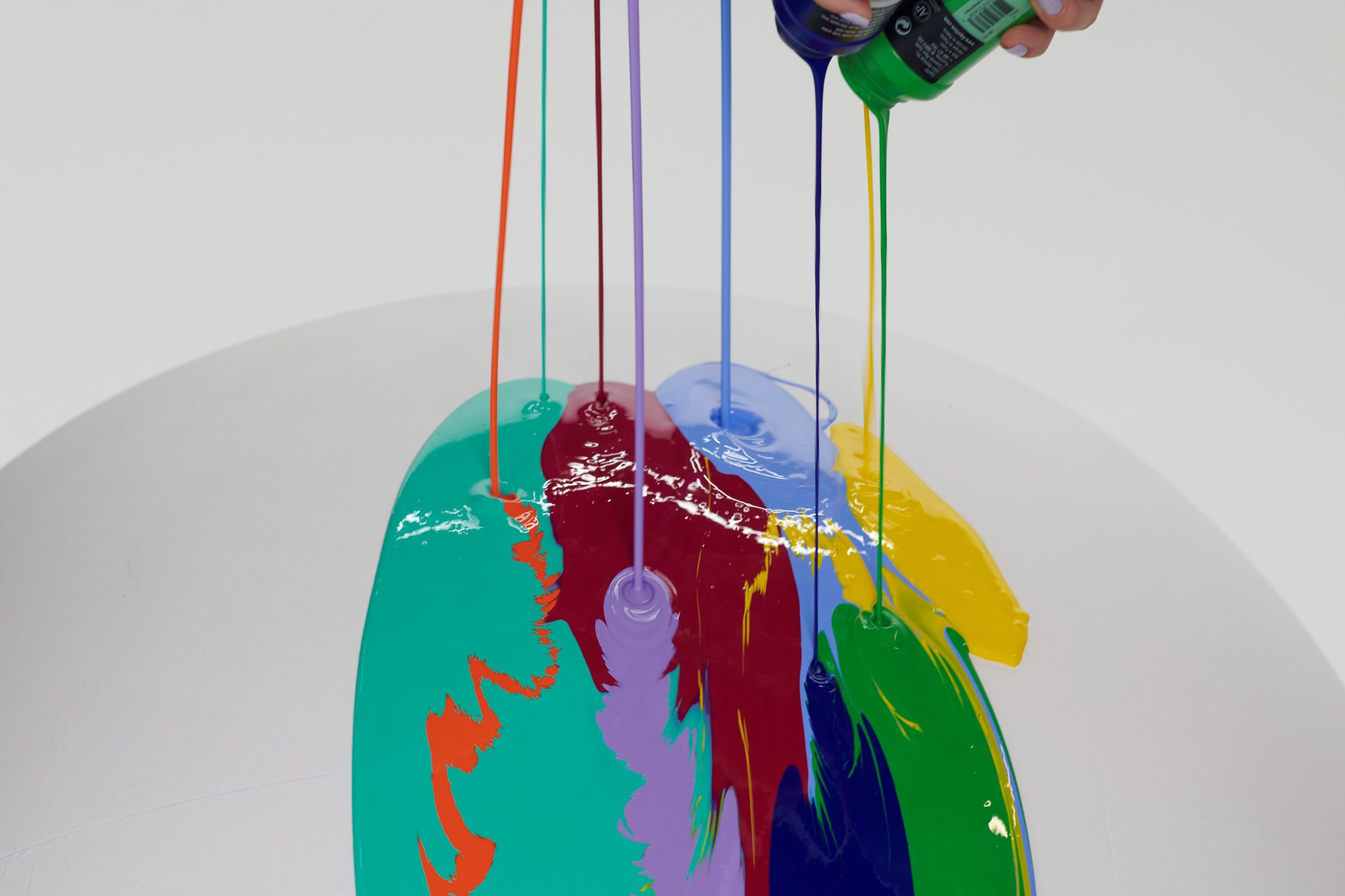Liquid Textures

When Jackson Pollock appeared in Life Magazine in August 1949, the now famous line which accompanied the photo spread - "Jackson Pollock - Is he the greatest living painter in the United States?" - was meant to be read with a slightly raised eyebrow. However, something about this new James Dean caught the psyche of the time. Pollock had made his first drip painting a couple of years before the Life Magazine article, but he wasn't the first to do so. That credit goes to Janet Sobel a Ukrainian-American Abstract Expressionist painter born Jennie Olechovsky in 1893.
Sobel's career began in their mid-forties but despite this late start, she was credited by Clement Greenberg for making the first ‘all over painting’. Sobel also pioneered the ‘drip painting’ technique which Pollock encountered when he first saw her paintings in 1945. Sobel would use glass pipettes to drip paint, listening to music, channelling powerful memories translated into meandering lines and swirls such as that which can be seen in Milky Way, 1945. Maybe it was the technique's reminiscence to psychoanalytic Rorschach tests, or Japanese ink drawings, which sparked Pollock's imagination, but by 1947 Pollock had made his first drip painting exploring the unpredictable qualities of fluid stringy trails of paint which tapped into his subconscious, and he replaced Sobel's glass pipettes with turkey basters which Pollock used to control the squirting and dripping of paint.
The critic Harold Rosenberg called this new style of painting ‘action painting’, where the canvas became an arena onto which artists performed. For Rosenberg this was a type of social action where the artists biography was intertwined with the marks made. No sooner had Clement Greenberg's band of Abstract Expressionists achieved notoriety, that action painting opened up new ways of thinking, from happenings to performance. One could even argue Pop art.
Greenberg formed a new band, so to speak, relocating a splinter movement of the New York School, this time to Washington D.C., under the banner of The Washing Colour School. Following a visit to Helen Frankenthaler’s studio, Kenneth Nolan and Morris Louis brought to Greenberg’s attention Frankenthaler's work, specifically Mountains and Sea, 1952, which became for Greenberg the template for the new movement of ‘post-painterly abstraction’. Unlikely the impasto marks of the New York School, this type of painting celebrated a more fluid approach of ‘soak-stain painting’ techniques developed by Frankenthaler. Here Greenberg saw a fusion between the liquidity of the paint and the canvas support creating the purely flat optical experience which Greenberg felt painting should aspire to. Noland, who was already teaching in Washington, relocated permanently by the early 60s, and together with Morris Louis, Gene Davies, Thomas Downing and Paul Freely, they investigated the potentials for fluid and wet-on-wet paint applications first brought to their attention by Frankenthaler's soak-stain painting technique.
The fast paced and cosmopolitan art scene of New York contrasted with the quieter, less commercial Washington and provided a space for a new generation of artist to experiment without the glare of the spotlight. A room in Morris Louis’ house would become a small studio during the day. By dinnertime there would be no trace of his studio activity, which would amount to over 600 paintings made between 1954 and 1962. Louis, a very private person, was never seen painting by anyone (not even his wife) and unlike the New York School’s night-owl heroics, Louis worked in daylight during office hours, keeping a record of every receipt and materials purchased which now give historians an insight into his working practice.
The Washington School continued to flourish with a second generation of artists developing this idea of thinness and fluidity. Alma Thomas who lived in Washington for 38 years working as an art teacher, gained recognition in the early 1970's, and in her 80s she became the first African American woman to have a solo exhibition at the Whitney Museum. Anne Truitt’s paintings took on a sculptural appearance resembling solid heavy blocks of paint achieved through numerous applications of thin layers. Kenneth Victor Young, who initially studied design and physics, went on to make paintings with an ethereal quality where glowing orbs of colour emanated. He began painting after meeting the artist Sam Gillian who passed away recently in 2022. Gillian's early compositions ran parallel to Nolan’s, but by 1965 he was recognised as the first artist to paint on a deconstructed canvas removed completely from its stretcher bars creating immersive soak-stained paintings reminiscent of the ones seen in Frankenthaler’s Life Magazine photo-shoot in 1956 where she sits directly on unstretched paintings spread out all over the floor of her New York studio.
What many of these artists have in common is an expansion on earlier ideas of Sobel's first use of paint-dripping techniques and Frankenthaler's soak-stain techniques. Unlike impasto paint applications where enough is not sufficient, through thinness and fluidity artist explore the mantra that less can be more. To achieve this, there is a complex science at play to formulate the right thickness of thinness. Developed in 1955 as the first water-based acrylic for artists, Liquitex is a portmanteau of ‘liquid’ and ‘texture’. Extending this dialogue of technological innovation, Professional Heavy Body, Soft Body, Acrylic Gouache, Acrylic Markers, Spray Paints and Inks, are today joined by Basics Fluids, a new studio range of Acrylic paint, available in 48 colous celebrating the power of drips, splattering, pouring, staining and fluid paint applications and lyrical abstraction.

